Articles of 2006
The Other Ring Sports
Kickboxing is a generic word used for fights where two men are allowed to throw punches and kicks. That’s why it has become abused and magazines write about muay thai kickboxing, french kickboxing, K-1 kickboxing and so on. The truth is that what is commonly referred to as kickboxing has very little in common with muay thai, savate and K-1 Grand Prix. In fact, when the K-1 Corporation executives realized that their sport was reaching epic proportions they decided to call it the “new fighting sport.” It was like saying that they didn’t want K-1 fights to be confused with kickboxing, muay thai and savate. Let’s discover the rules of each ring sport.
KICKBOXING – It was invented in the 1960s in Japan. They got the idea from muay thai. Those fights were too dangerous and Japanese athletes were getting regularly beaten up, so somebody tried to fight without throwing elbows and knees; the new style was an immediate success in Japan. In 1970s, Mike Anderson tried to promote kickboxing matches in the United States. He found out that many people didn’t like the kicks to the legs, mainly because they force the competitors to stay close to each other and the fight can become boring (at least for the American fans who love exclusively action-packed fights). A roundhouse kick to the face must be thrown from a long distance, the movement is more elegant and more appealing for the tv networks. If the athletes keep constantly away from each other, they are also tempted to try highly spectacular moves like the flying spinning kicks. TV networks executives consider kickboxing just another kind of entertainment: the more spectacular it is, the better it is.
On September 14, 1974 in Los Angeles, Mike Anderson promoted the first world championship of the new style and called it full contact karate. With the years, the word karate was substituted with kickboxing by the major sanctioning bodies: World Karate Association became World Kickboxing Association, World All-Style Karate Organization became World Association of Kickboxing Organizations. The main reason for this change was that traditional karate federations didn’t want to be associated with the new sport and called their lawyers. On the other hand, full contact champions didn’t want to be confused with karate champions. In my opinion, they were right because karate champions never throw legitimate punches or kicks and don’t have the same level of physical strength or skills. If the karatekas never get hit seriously, they don’t get used to the pain; most likely, they will get KOed the first time a good punch reaches their face. So, the two sports must not be confused. Getting back to kickboxing, the style without the kicks to the legs became widely popular in North and Latin America. Kickboxing, with the low kicks, was the favorite sport in Asia and Europe. To make the fans understand what they were going to see, promoters distinguished the two styles with the names full contact and low kicks. Today, kickboxing is just a generic word used for a sport with many styles including point competitions:
Full Contact – Punches and kicks from the waist up. It is also allowed to use footsweeps.
Low Kick – Punches from the waist up, kicks everywhere and footsweeps.
Light Contact – Like Full Contact, only that the KO is prohibited. It started as a ring sport, but now the fights are usually held on a tatami (size of 8×8 meters).
Semi Contact – Like Full Contact, only that the referee stops the action after every valid punch or kick. It’s a point competition and was never held inside a ring. In 1985, it got a publicity boost after Troy Dorsey won the gold medal during the WAKO world championships held in London (England). Light and Semi Contact are more popular in Europe.
K-1 GRAND PRIX – It also comes from muay thai, like Kazuyoshi Ishii said many times. He wanted to create a new sport and muay thai was very popular in Japan, so he added the use of the knees to kickboxing. Mr. Ishii thought that shots with elbows were too dangerous and he didn’t include them in K-1 fights. Besides, Mr. Ishii’s main goal was to create a style easy to learn for every kind of athlete: he wanted to match specialists from karate, kickboxing, taekwondo, muay thai and every other martial art you can think of. Punches and kicks are included in every fighting system; knee shots are easy to learn. Everybody could adapt to K-1 rules and nobody was getting a significant advantage. K-1 Grand Prix debuted in April 1993, drawing 10,000 spectators. It was a huge number compared to most kickboxing shows, but that wasn’t enough for Mr. Ishii. He kept improving K-1 events, adding impressive choreography (like a philharmonic orchestra, Japanese bongo players, spectacular fireworks, the election of Miss Ring and so on), invited everybody to fight (professional boxers, sumo wrestlers, toughman contest winners and even football players) and set many consecutive attendance records. K-1 Grand Prix reached its peak in 2002: 74,500 spectators. Since then, the audience dropped every year: 67,000 in 2003, 64,000 in 2004, 58,000 in 2005. Even with a negative trend going on, K-1 Grand Prix remains the most successful ring sport in the world. Thanks to Mr. Ishii the best champions from the other fighting arts have the opportunity to get worlwide exposure and make big money.
MUAY THAI – The modern version was conceived in 1930s and comes from 2,000 years old traditional Siamese fighting systems. Muay thai fighters don’t want their sport to be confused with kickboxing or anything else. According to muay thai champions, every other ring sport is a limited form of fighting. Besides, they consider muay thai a martial art with a philosophy of life to be followed 365 days a year. Before every match, muay thai fighters play a dance called Ram muay. If you go to Lumpinee Stadium, don’t laugh and don’t make any hilarious comments when you see Ram muay: they take it very seriously because it’s an ancient tradition and they could react knocking you out. During muay thai fights, traditional music is played and the greatest champions are able to coordinate their attacks with the rhythm of the music.
The Rules – Punches and elbows from the waist up, kicks and knees everywhere, footsweeps. It is allowed to hit the opponent during a clinch and to throw him down (in that moment, the action must be stopped). If a fighter grabs his opponent’s leg, he can punch him using the other hand. Flying knees to the face are deadly weapons and are typical of Thai warriors. European and American fighters usually get KOed by flying knees because they don’t expect to be hit in such a way.
THAI KICKBOXING – It was recently invented in Europe and they consider it muay thai without the elbows, with the clinches lasting only five seconds and with the prohibition of using some of the extreme techniques legal in Bangkok rings like hitting the throat. In thai kickboxing, punches have the same values for judges as any other legal technique. In muay thai, judges give scarce importance to punches. In thai kickboxing, there isn’t the Ram muay dance and no music is played during the fight. With all these changes, thai kickboxing cannot be considered muay thai anymore.
SAVATE – Punches from the waist up, kicks everywhere and footsweeps. It sounds like a low kick style of kickboxing, but savate was invented in 1700 by French sailors who came back from tours of the Orient. Initially, the idea was to attack only with kicks. In 1800 it introduced the use of punches. According to modern rules, savate fighters can throw kicks only after having “charged them”: the first move is to put the knee back, the second to “release” the kick. It is not allowed to just move the leg up, to deliver an axe kick like in other ring sports. The only straight kick permitted by savate rules is the one against the opponent’s flute that must be hit with the sole of the foot: it’s called “charlemont.” Another characteristic of savate fighters is that they often move laterally before kicking: this strategy allows them to elude their opponent’s counters and find the best angle for striking effectively. It has to be noticed that savate fighters must wear shoes and this makes their kicks more dangerous. That’s why savate fighters cannot kick with the tip of their toes. In the ring sports community, most people think that savate fighters cannot compete with kickboxers or muay thai and K-1 champions. Theoretically, it makes sense because savate allows a smaller number of attacks and defenses. But, a real fight is different from theory. I understood it when Francois Pennacchio faced Ramon Dekkers in a kickboxing match many years ago in Milan. The Frenchman was underrated because he got his ring education through savate. Even if Pennacchio became world champion in kickboxing, he always considered himself a savateur and said it proudly in every interview. On the other hand, Ramon Dekkers had knocked out everybody in Europe and was one of the few western muay thai fighters to have scored major wins in Thailand and Japan. Well, the fight between Francois Pennacchio and Ramon Dekkers was totally different from what anybody could have imagined. Pennacchio tried to sweep Dekker’s feet and was successful sending him to the canvas. The Frenchman tried a second time and it worked again. So, Pennacchio kept sweeping Dekkers for the whole night. Pennacchio was also too fast for the Dutch superstar and won on points. Ramon Dekkers knew how to use every part of his body as a weapon, but didn’t know how to protect himself from savate’s footsweeps.
I would like to know what you readers think about the different ring sports. What’s your favorite to practice and to watch? What is, according to your judgement, the most dangerous ring sport in the world?
-

 Featured Articles3 weeks ago
Featured Articles3 weeks agoThe Hauser Report: Cinematic and Literary Notes
-
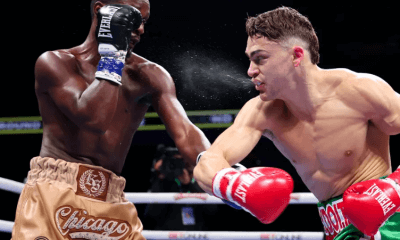
 Featured Articles4 weeks ago
Featured Articles4 weeks agoOscar Duarte and Regis Prograis Prevail on an Action-Packed Fight Card in Chicago
-
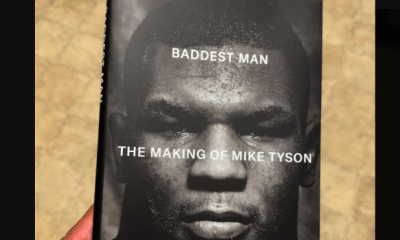
 Book Review3 weeks ago
Book Review3 weeks agoMark Kriegel’s New Book About Mike Tyson is a Must-Read
-
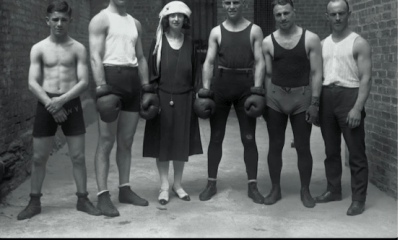
 Featured Articles1 week ago
Featured Articles1 week agoThe Hauser Report: Debunking Two Myths and Other Notes
-
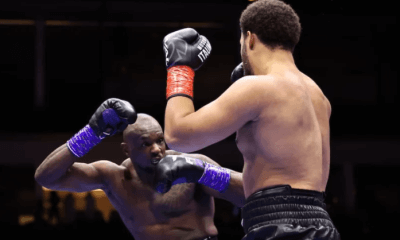
 Featured Articles2 weeks ago
Featured Articles2 weeks agoMoses Itauma Continues his Rapid Rise; Steamrolls Dillian Whyte in Riyadh
-
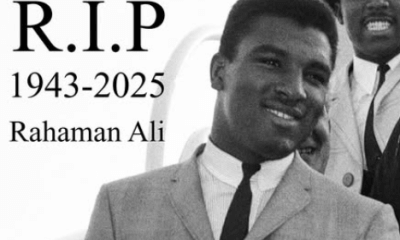
 Featured Articles4 weeks ago
Featured Articles4 weeks agoRahaman Ali (1943-2025)
-

 Featured Articles4 weeks ago
Featured Articles4 weeks agoTop Rank Boxing is in Limbo, but that Hasn’t Benched Robert Garcia’s Up-and-Comers
-
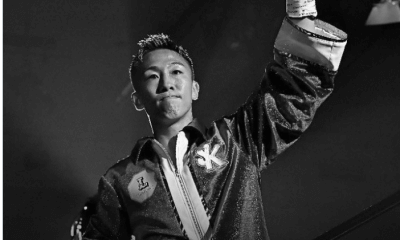
 Featured Articles3 weeks ago
Featured Articles3 weeks agoKotari and Urakawa – Two Fatalities on the Same Card in Japan: Boxing’s Darkest Day














